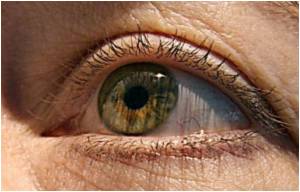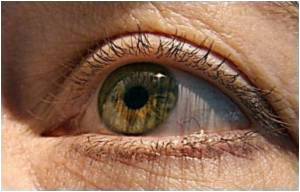Vision is not as sharp as in the light of day and detecting a bicyclist on the road or a careening tennis ball can be tough at night as the eye can be deceived.

Like the mirror of a telescope pointed toward the night sky, the eye's rod cells capture the energy of photons - the individual particles that make up light. The interaction triggers a series of chemical signals that ultimately translate the photons into the light we see.
The key light receptor in rod cells is a protein called rhodopsin. Each rod cell has about 100 million rhodopsin receptors, and each one can detect a single photon at a time.
Scientists had thought that the strength of rhodopsin's signal determines how well we see in dim light. But UC Davis scientists have found instead that a second step acts as a gatekeeper to correct for rhodopsin errors. The result is a more accurate reading of light under dim conditions.
A report on their research appears in the October issue of the journal Neuron in a study entitled "Calcium feedback to cGMP synthesis strongly attenuates single photon responses driven by long rhodopsin lifetimes."
Individual rhodopsin errors are relatively small in magnitude - on the order of a few hundredths of a second - but even this much biological noise can affect how well the signal gets transmitted to the rest of the brain, the researchers said.
Advertisement
"The rhodopsin receptor is the site where physics meets biology - where a photon of light from the physical world must get interpreted for the nervous system," said Marie Burns, professor of ophthalmology and vision science at UC Davis School of Medicine and lead author of the study. "Biology is messy. Rhodopsin does a remarkable but not perfect job."
Advertisement
They found that rhodopsin activity changed calcium levels in the cells and that over-active rhodopsins changed calcium levels at a faster rate than normal. This faster change led calcium to trigger a series of chemical steps to counter the over-active rhodopsin signal by producing an equal and opposite signal, thereby correcting false information before it gets sent on to the rest of the visual system.
They uncovered this fundamental new level of control by measuring how long individual rhodopsin receptors remained active in response to flashes of light, and then determining how much calcium's gatekeeping function modified the rhodopsin signals.
"Basic research like ours often doesn't translate to immediate clinical treatments for known diseases, but understanding fundamental processes has long-term significance," Burns said. "In the case of our research, this understanding can prove essential for progress on a range of vision deficits that are currently poorly understood and untreatable."
Source-Eurekalert









